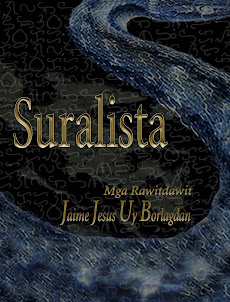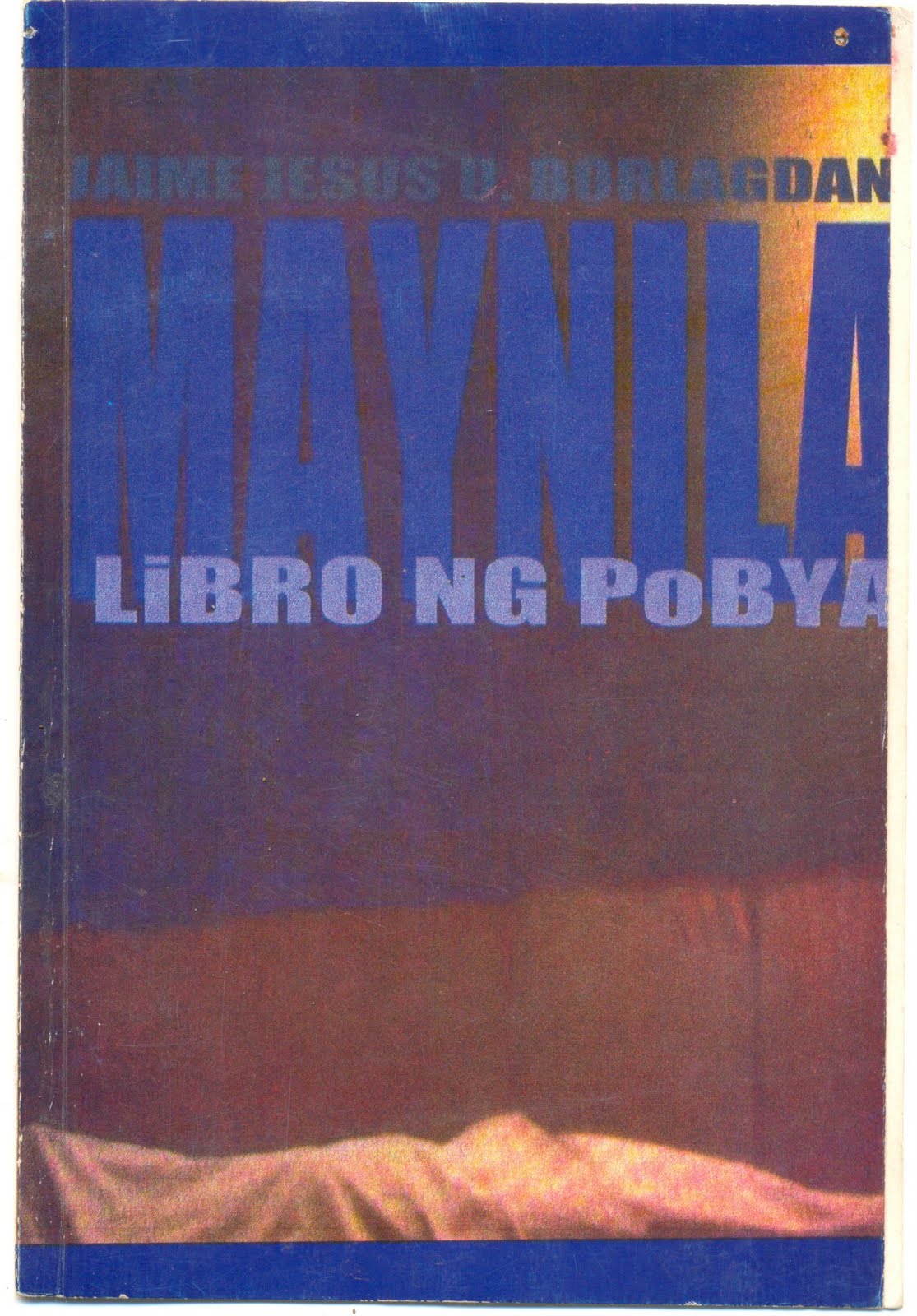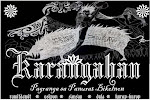Treseng Tigsik
1
Tinigsik ko ining gapo
an haraphap kong puso
kaito pighagad mo sako
kan pinalumoy ko
dai mo na tig-ako.
2
Tinigsik ko ining Pagkamoot
ngaran kan banwa ta kan enot
bago nagasod ni Nayokang Tabak ko
sa kastilang “que lugar este?” an hapot.
3
Tinigsik ko ini si padaba
magayon ta mataba-taba
ulunan kun siya sakong isipon
dampog na masiram pagkuguson.
4
Tinigsik ko ining Natunawan
na ki kaitong Maisog sarong kahadean
nagrambong, narugba, narunot kan uran
daungan ngonyan kan hukol
na hinangos ni Causwagan.
5
Tinigsik ko ining bangui
naghihibi, naghuhuni
uran an isinimbag kaini
kan inaram ko kun nata oni?
6
Tinigsik ko ining dampog
puro abó an laog
kan sakuyang dinangog
tuminigob na gari basog.
7
Tinigsik ko ining uran
tursidong rehas sa Kadlan
an minasayaw daa diyan
daog pa an piguulian.
8
Tinigsik ko ining daga
daing kintab pero bulawan
bakong daraga
pero pig-iiriwalan.
9
Tinigsik ko si Krishna
ngaran kan Diyos Ama
an magsirbe Saiya
kaya naging tawo ka.
10
Tinigsik ko ining pili
hararom na babayi
intindiha sana an unit na itom
ta dai ka nanggad makakatana
kan natok sa irarom.
11
Tinigsik ko ining iba
gibo kan dai nanara
aram nang an alsum
lampas pa sa ngana
dawa ngororis na
dawa nagroroluha
dai mapundo sagkod dai
napupunggol an dila.
12
Tinigsik ko an pantomina
mahamis na bangui an dara-dara
dawa hinghing na sana
kan uminabot sakuya
iyo man giraray
an sa daghan ko
minarugba.
13
Tinigsik ko an baraylihan
kan mga burak buda ayam
nasa mga ayam sa puon an pagtios
nasa mga burak sa hudyan an pagluyos.
Ako Kalag Omay (2015)
Buhay-Gadan (2014)
Ha'dit sa byahe buda iba pang mga bagahe (2013)
X (2012)
Hamot kan Narumdom (2011)
Suralista: Mga Rawitdawit (2010)

Makukua sa: Gabos na Lucky Educ. outlets (Naga, Legazpi, Tabaco, Polangui, Sorsogon); Tabaco: Arden,Imprintados Advertising. Naga: Lucky Educational Supply. O kaya sa 0917 524 2309
Que Lugar Este kan Dayo sa Sadiring Banwa (2009)

"Maunod, magabat. Alagad makamuyahon ta magian basahon, ta makamuyahon saka labas an tanog. Makata, uragon." Gode B. Calleja. Abilable sa gabos na Lucky Educ. Supply Outlets; Kulturang Bikolnon. For inquiries:0917 524 2309
Maynila: Libro ng Pobya (1999)

Makukua sa gabos na Lucky Educ Supply outlets buda sa Imprintados Ads sa Tabaco City. Para sa mga kahaputan mag-text sa 0917 524 2309
Karangahan Online
On Borlagdan's Poetry
A Rush of Metaphors, Tremor of Cadences, and Sad Subversions
By Tito Genova Valiente
titovaliente@yahoo.com
The first time I read the poems of Jesus Jaime Borlagdan, Jimple to those who know him, I felt immediately the seething movement of the words. There was a rush of metaphors in his works. I immediately liked the feeling that the rhythm caused in one’s reading for poetry, in my book, should always be read aloud. I was hearing the voice. It was a voice that happened to sound from afar and it was struggling to link up with a present that would not easily appear.
It was heartbreaking to feel the form. I felt the lines constricting. I saw the phrases dangling to tease, breaking the code of straight talk and inverting them to seduce the mind to think beyond the words. Somewhere, the poems were reverting back to direct sentences, weakening the art of poetry with its universe of ellipses and nuances, but then as suddenly as the words lightened up, the poems then dipped back into a silent retreat, into a cave, to lick its own wounds from the confrontation that it dared to initiate.
For this column, I decide to share parts of the longer paper I am writing about this poet.
In Karangahan, the poet begins with: Bulebard, ikang muymuyon na salog/ki gatas buda patenteng nakahungko,/ako ngonian kahurona. Borlagdan translates this into:Boulevard, you forlorn river/ of milk and downcast lights/ speak to me now. Savor the translation, for in Bikol that which is a dialog has become an entreaty.)
The poet is always talking to someone but in An istorya ninda, an osipon ta, he talks about a the fruits of some narrative: Ta sa dara nindang korona kita an hadi/ sa krus, kita su may nakatadok na espada./Naitaram na ninda an saindang istorya./Punan ta na man su satong osipon./This I translate as: For in the crown they bear we are the King/ on the cross, with the embedded sword./ Marvel at this construction, as the poet cuts at the word “hadi” and begins the next line with “krus” and the “espada.” Marvel, too, at how he looks at conversion and faith, a process that made us special but also wounded us with ourselves stuck with the sword.
Finally, the poet says those lines of the true believer: They have already spoken their story, now let us begin with our tale. The poet does not have a translation but will the istorya in this line be “history” and osipon be “myth.” Shall these last four lines in the first stanza be both a subversion of our faith embedded in a foreign culture or a celebration of what we are not, and what we have not become?
Puni na an paghidaw. Puni na an pagluwas/hali sa kwartong pano ki luha, puni na/an paghiling sa luwas kan bintana./Puni na an paghidaw para sa binayaan./Puni na an pagsulit sa daluging tinimakan./Puni na an paghidaw sa mga sinugbang utoban. Terrifying lines as the poet calls us to begin the remembering and also begin the moving out from the room full of tears. In the poet’s mind, the lacrimarum vale or valley of tears had become an intimate area for instigating his own release.
The rhythm is there as in a prayer. But it is no prayer. There is the repetition but it is not a plea. There is the self but it is one that has turned away from itself into something else. That self is one that shall face the recollection of the faith that has been burned.
And yet the poet, resolute when he wants to, loves to sing and hint of fear and anxiety. Even when he is merely observing children playing in the rains, he summons images of terrible beauty. The skies become diklom na pinandon na “may luho” (with hole). From this hole, comes the sarong pisi ki sildang/ tisuhon na buminulos. The poet stays with this metaphor with such intensity that the silken thread coming from the hole justifiably becomes luhang garo hipidon na busay/paluwas sa mata/kan dagom. Dark wit and a penchant for the horrifying are tandem graces in these lines.
This is the poet who can, without self-consciousness, tell us of the …haya/kan mga ayam na namimibi/nakakapabuskad ki barahibo/nakakaulakit ki lungsi. He whispers of “halas na rimuranon, malamti/sa hapiyap kan mga bituon.”
This is a startling universe, where dogs pray (and bay), and where fears bloom and paleness afflicts and infects, and serpents are caressed by the stars.
Blog Archive
-
►
2016
(11)
- ► 11/27 - 12/04 (1)
- ► 11/20 - 11/27 (5)
- ► 04/10 - 04/17 (1)
- ► 03/20 - 03/27 (1)
- ► 02/21 - 02/28 (2)
- ► 02/07 - 02/14 (1)
-
►
2015
(12)
- ► 11/01 - 11/08 (1)
- ► 10/25 - 11/01 (2)
- ► 09/20 - 09/27 (1)
- ► 03/29 - 04/05 (3)
- ► 03/15 - 03/22 (2)
- ► 02/01 - 02/08 (1)
- ► 01/18 - 01/25 (1)
- ► 01/11 - 01/18 (1)
-
►
2013
(23)
- ► 05/26 - 06/02 (1)
- ► 05/19 - 05/26 (1)
- ► 05/12 - 05/19 (1)
- ► 05/05 - 05/12 (1)
- ► 04/28 - 05/05 (1)
- ► 04/21 - 04/28 (2)
- ► 04/14 - 04/21 (2)
- ► 04/07 - 04/14 (1)
- ► 03/31 - 04/07 (1)
- ► 03/24 - 03/31 (1)
- ► 03/17 - 03/24 (1)
- ► 03/10 - 03/17 (1)
- ► 03/03 - 03/10 (1)
- ► 02/24 - 03/03 (1)
- ► 02/17 - 02/24 (1)
- ► 02/10 - 02/17 (1)
- ► 02/03 - 02/10 (1)
- ► 01/27 - 02/03 (1)
- ► 01/20 - 01/27 (2)
- ► 01/13 - 01/20 (1)
-
►
2012
(59)
- ► 11/04 - 11/11 (2)
- ► 10/28 - 11/04 (4)
- ► 10/21 - 10/28 (2)
- ► 10/14 - 10/21 (3)
- ► 09/30 - 10/07 (1)
- ► 09/23 - 09/30 (1)
- ► 09/16 - 09/23 (1)
- ► 09/09 - 09/16 (2)
- ► 08/26 - 09/02 (1)
- ► 08/12 - 08/19 (1)
- ► 08/05 - 08/12 (1)
- ► 07/29 - 08/05 (1)
- ► 07/15 - 07/22 (1)
- ► 07/08 - 07/15 (1)
- ► 05/20 - 05/27 (2)
- ► 05/06 - 05/13 (2)
- ► 04/29 - 05/06 (4)
- ► 04/22 - 04/29 (1)
- ► 04/08 - 04/15 (1)
- ► 04/01 - 04/08 (5)
- ► 03/25 - 04/01 (2)
- ► 03/18 - 03/25 (1)
- ► 02/19 - 02/26 (1)
- ► 02/05 - 02/12 (1)
- ► 01/29 - 02/05 (4)
- ► 01/22 - 01/29 (4)
- ► 01/15 - 01/22 (7)
- ► 01/08 - 01/15 (1)
- ► 01/01 - 01/08 (1)
-
►
2011
(34)
- ► 12/11 - 12/18 (1)
- ► 12/04 - 12/11 (1)
- ► 11/20 - 11/27 (1)
- ► 11/06 - 11/13 (2)
- ► 10/30 - 11/06 (1)
- ► 10/16 - 10/23 (1)
- ► 10/09 - 10/16 (3)
- ► 10/02 - 10/09 (5)
- ► 09/25 - 10/02 (1)
- ► 09/18 - 09/25 (1)
- ► 08/28 - 09/04 (2)
- ► 07/31 - 08/07 (1)
- ► 07/24 - 07/31 (1)
- ► 07/03 - 07/10 (1)
- ► 06/26 - 07/03 (1)
- ► 06/12 - 06/19 (1)
- ► 05/29 - 06/05 (1)
- ► 05/15 - 05/22 (1)
- ► 04/10 - 04/17 (1)
- ► 03/27 - 04/03 (1)
- ► 03/13 - 03/20 (1)
- ► 03/06 - 03/13 (1)
- ► 02/27 - 03/06 (1)
- ► 02/13 - 02/20 (1)
- ► 01/23 - 01/30 (1)
- ► 01/09 - 01/16 (1)
-
►
2010
(28)
- ► 12/26 - 01/02 (1)
- ► 12/12 - 12/19 (1)
- ► 11/28 - 12/05 (1)
- ► 11/14 - 11/21 (1)
- ► 10/31 - 11/07 (1)
- ► 10/10 - 10/17 (1)
- ► 09/26 - 10/03 (1)
- ► 09/19 - 09/26 (1)
- ► 09/12 - 09/19 (1)
- ► 08/29 - 09/05 (1)
- ► 08/15 - 08/22 (1)
- ► 07/25 - 08/01 (1)
- ► 07/11 - 07/18 (1)
- ► 06/27 - 07/04 (1)
- ► 06/13 - 06/20 (1)
- ► 05/30 - 06/06 (1)
- ► 04/25 - 05/02 (1)
- ► 04/11 - 04/18 (1)
- ► 03/28 - 04/04 (1)
- ► 03/14 - 03/21 (1)
- ► 02/28 - 03/07 (1)
- ► 02/14 - 02/21 (2)
- ► 01/31 - 02/07 (1)
- ► 01/24 - 01/31 (1)
- ► 01/10 - 01/17 (2)
- ► 01/03 - 01/10 (1)
-
►
2009
(20)
- ► 12/20 - 12/27 (1)
- ► 12/13 - 12/20 (1)
- ► 11/22 - 11/29 (1)
- ► 11/15 - 11/22 (1)
- ► 10/25 - 11/01 (1)
- ► 09/06 - 09/13 (1)
- ► 08/02 - 08/09 (1)
- ► 07/05 - 07/12 (1)
- ► 06/21 - 06/28 (1)
- ► 05/31 - 06/07 (1)
- ► 05/10 - 05/17 (1)
- ► 05/03 - 05/10 (1)
- ► 04/12 - 04/19 (1)
- ► 03/29 - 04/05 (1)
- ► 03/15 - 03/22 (1)
- ► 03/01 - 03/08 (1)
- ► 02/15 - 02/22 (1)
- ► 02/01 - 02/08 (1)
- ► 01/25 - 02/01 (1)
- ► 01/11 - 01/18 (1)
-
►
2008
(14)
- ► 12/28 - 01/04 (1)
- ► 11/30 - 12/07 (2)
- ► 11/09 - 11/16 (1)
- ► 10/26 - 11/02 (2)
- ► 10/05 - 10/12 (2)
- ► 09/14 - 09/21 (1)
- ► 08/17 - 08/24 (1)
- ► 08/10 - 08/17 (1)
- ► 07/06 - 07/13 (1)
- ► 06/08 - 06/15 (1)
- ► 05/18 - 05/25 (1)
-
►
2007
(7)
- ► 09/23 - 09/30 (1)
- ► 08/19 - 08/26 (1)
- ► 04/22 - 04/29 (5)
-
►
2006
(7)
- ► 10/15 - 10/22 (3)
- ► 09/03 - 09/10 (4)
-
▼
2005
(4)
- ► 05/22 - 05/29 (1)
- ► 04/03 - 04/10 (1)
- ► 02/27 - 03/06 (1)
-
►
2004
(25)
- ► 12/05 - 12/12 (1)
- ► 10/31 - 11/07 (1)
- ► 10/24 - 10/31 (2)
- ► 09/05 - 09/12 (1)
- ► 08/29 - 09/05 (1)
- ► 07/25 - 08/01 (1)
- ► 02/29 - 03/07 (1)
- ► 02/22 - 02/29 (4)
- ► 02/15 - 02/22 (1)
- ► 02/08 - 02/15 (2)
- ► 01/04 - 01/11 (10)
Huron Suralista
Sunodon si Suralista
Facebook Badge
Facebook Badge
Sakuya pa
- Karangahan: Pagranga sa Panurat Bikolnon (ONLINE)
- Introduction to Jimple
- Jimple's Multiply Site
- Paikot sa Kirot: Kalipunan ng mga Tula sa Tagalog
- Que Lugar Este Kan Dayo Sa Sadiring Banwa: Mga Rawitdawit
- Mahalnas na Upon: Katipunan ki mga Osipon buda iba pang hurop-hurop
- Krear Bathala Propaganda Machine




